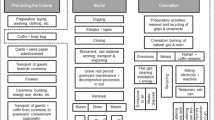Abstract
Harvesting plans for Canadian logging companies tend to cover wider territories than before. Long transportation distances for the workers involved in logging activities have thus become a significant issue. Often, cities or villages to accommodate the workers are far away. A common practice is thus to construct camps close to the logging regions, containing the complete infrastructure to host the workers. The problem studied in this paper consists in finding the optimal number, location and size of logging camps. We investigate the relevance and advantages of constructing additional camps, as well as expanding and relocating existing ones, since the harvest areas change over time. We model this problem as an extension of the Capacitated Facility Location Problem. Economies of scale are included on several levels of the cost structure. We also consider temporary closing of facility parts and particular capacity constraints that involve integer rounding on the left hand side. Results for real-world data and for a large set of randomly generated instances are presented.





Similar content being viewed by others
References
Albareda-Sambola, M., Fernandez, E., Hinojosa, Y., & Puerto, J. (2009). The multi-period incremental service facility location problem. Computers & Operations Research, 36(5), 1356–1375.
Ballou, R. H. (1968). Dynamic warehouse location analysis. Journal of Marketing Research, 5(3), 271–276.
Bredström, D., Jönsson, P., & Rönnqvist, M. (2010). Annual planning of harvesting resources in the forest industry. International Transactions in Operational Research, 17(2), 155–177.
Canel, C., Khumawala, B. M., Law, J., & Loh, A. (2001). An algorithm for the capacitated, multi-commodity multi-period facility location problem. Computers & Operations Research, 28(5), 411–427.
Carlsson, D., D’Amours, S., Martel, A., & Rönnqvist, M. (2009). Supply chain planning models in the pulp and paper industry. INFOR. Information Systems and Operational Research, 47(3), 167–183.
Correia, I., & Captivo, M. (2003). A Lagrangean heuristic for a modular capacitated location problem. Annals of Operations Research, 122, 141–161.
D’Amours, S., Rönnqvist, M., & Weintraub, A. (2008). Using operational research for supply chain planning in the forest products industry. INFOR. Information Systems and Operational Research, 46(4), 265–281.
Dias, J. (2006). Capacitated dynamic location problems with opening, closure and reopening of facilities. IMA Journal of Management Mathematics, 17(4), 317–348.
Gendron, B., & Crainic, T. (1994). Relaxations for multicommodity capacitated network design problems (Technical report). Publication CRT-945, Centre de recherche sur les transports, Université de Montréal.
Geoffrion, A. M., & Graves, G. W. (1974). Multicommodity distribution system design by benders decomposition. Management Science, 20(5), 822–844.
Gouveia, L., & Saldanha da Gama, F. (2006). On the capacitated concentrator location problem: a reformulation by discretization. Computers & Operations Research, 33(5), 1242–1258.
Hamacher, H., & Nickel, S. (1998). Classification of location models. Location Science, 6(1–4), 229–242.
Holmberg, K. (1994). Solving the staircase cost facility location problem with decomposition and piecewise linearization. European Journal of Operational Research, 75(1), 41–61.
Holmberg, K., & Ling, J. (1997). A Lagrangean heuristic for the facility location problem with staircase costs. European Journal of Operational Research, 97(1), 63–74.
Klose, A., & Drexl, A. (2005). Facility location models for distribution system design. European Journal of Operational Research, 162(1), 4–29.
Lee, C. Y. (1991). An optimal algorithm for the multiproduct capacitated facility location problem with a choice of facility type. Computers & Operations Research, 18(2), 167–182.
Melo, M., Nickel, S., & Saldanha da Gama, F. (2005). Dynamic multi-commodity capacitated facility location: a mathematical modeling framework for strategic supply chain planning. Computers & Operations Research, 33(1), 181–208.
Melo, M., Nickel, S., & Saldanha da Gama, F. (2009). Facility location and supply chain management—a review. European Journal of Operational Research, 196(2), 401–412.
Owen, S. H., & Daskin, M. S. (1998). Strategic facility location: a review. European Journal of Operational Research, 111(3), 423–447.
Paquet, M., Martel, A., & Desaulniers, G. (2004). Including technology selection decisions in manufacturing network design models. International Journal of Computer Integrated Manufacturing, 17(2), 117–125.
Peeters, D., & Antunes, A. P. (2001). On solving complex multi-period location models using simulated annealing. European Journal of Operational Research, 130(1), 190–201.
Revelle, C., & Eiselt, H. (2005). Location analysis: a synthesis and survey. European Journal of Operational Research, 165(1), 1–19.
Revelle, C., Eiselt, H., & Daskin, M. S. (2008). A bibliography for some fundamental problem categories in discrete location science. European Journal of Operational Research, 184(3), 817–848.
Rönnqvist, M. (2003). Optimization in forestry. Mathematical Programming, 284, 267–284.
Shulman, A. (1991). An algorithm for solving dynamic capacitated plant location problems with discrete expansion sizes. Operations Research, 39(3), 423–436.
Smith, H. K., Laporte, G., & Harper, P. R. (2009). Locational analysis: highlights of growth to maturity. Journal of the Operational Research Society, 60, S140–S148.
Sridharan, R. (1991). A Lagrangian heuristic for the capacitated plant location problem with side constraints. Journal of the Operational Research Society, 42(7), 579–585.
Sridharan, R. (1995). The capacitated plant location problem. European Journal of Operational Research, 87(2), 203–213.
Troncoso, J., & Garrido, R. (2005). Forestry production and logistics planning: an analysis using mixed-integer programming. Forest Policy and Economics, 7(4), 625–633.
Warszawski, A. (1973). Multi-dimensional location problems. Operational Research Quarterly, 24(2), 165–179.
Weintraub, A., & Romero, C. (2006). Operations research models and the management of agricultural and forestry resources: a review and comparison. Interfaces, 36(5), 446–457.
Wesolowsky, G. O. (1973). Dynamic facility location. Management Science, 19(11), 1241–1248.
Wesolowsky, G. O., & Truscott, W. G. (1975). The multiperiod location-allocation problem with relocation of facilities. Management Science, 22(1), 57–65.
Acknowledgements
We would like to thank Mathieu Blouin and Jean Favreau from FPInnovations for their valuable support throughout this study and for providing the data used in the experiments. The authors are also grateful to MITACS, the Natural Sciences and Engineering Research Council of Canada (NSERC) and FPInnovations for their financial support.
Author information
Authors and Affiliations
Corresponding author
Rights and permissions
About this article
Cite this article
Jena, S.D., Cordeau, JF. & Gendron, B. Modeling and solving a logging camp location problem. Ann Oper Res 232, 151–177 (2015). https://doi.org/10.1007/s10479-012-1278-z
Published:
Issue Date:
DOI: https://doi.org/10.1007/s10479-012-1278-z




